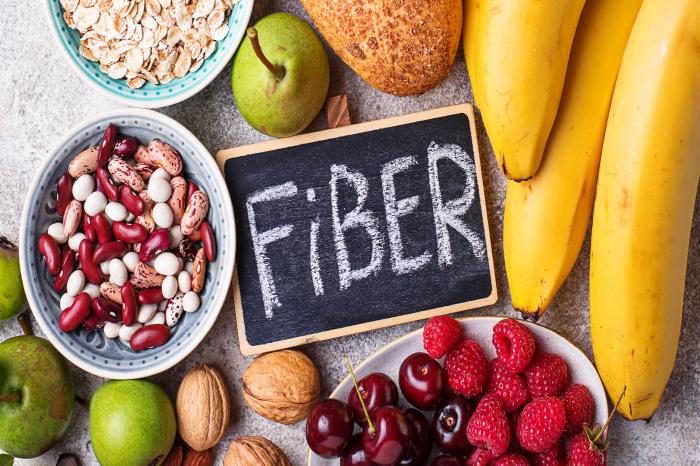Breastfeeding requires a well-balanced diet to ensure that both mother and baby receive essential nutrients. One key component of a healthy diet is fiber. Fiber supports digestive health, helps with weight management, and provides sustained energy, all of which are important for breastfeeding mothers. This article explores high-fiber foods that are beneficial for breastfeeding and provides tips on how to incorporate them into your diet.
Why Fiber is Important for Breastfeeding Mothers
Fiber plays several crucial roles in maintaining health, particularly for breastfeeding mothers. Here’s why it’s important:
a. Supports Digestive Health
Fiber aids in maintaining regular bowel movements and preventing constipation. This is especially helpful during the postpartum period when digestive issues can be common.
b. Helps with Weight Management
High-fiber foods can help you feel full longer, which can be beneficial for managing weight after childbirth. Feeling satiated reduces the likelihood of overeating and helps maintain a healthy weight.
c. Provides Sustained Energy
Fiber-rich foods help regulate blood sugar levels by providing a steady release of energy. This is important for new mothers who need consistent energy throughout the day to care for their baby.
Top High-Fiber Foods to Include in Your Diet
Including a variety of high-fiber foods in your diet can provide multiple health benefits. Here are some excellent options to consider:
a. Whole Grains
Whole grains are packed with fiber and essential nutrients. They help with digestion and provide lasting energy.
Oats: A versatile choice that can be used in breakfast bowls, smoothies, or baking.
Quinoa: A complete protein that also offers a good amount of fiber. It can be used as a side dish or in salads.
Brown Rice: A high-fiber alternative to white rice, it pairs well with many dishes.
b. Fruits
Fruits are not only delicious but also provide essential vitamins and fiber.
Apples: Eating apples with the skin on provides a significant amount of fiber. They can be eaten raw or added to oatmeal and salads.
Pears: Another fruit high in fiber, pears are great for digestion and can be eaten fresh or added to dishes.
Berries: Strawberries, raspberries, and blueberries are high in fiber and antioxidants. They make a great addition to yogurt or smoothies.
See also: Top 10 Fruits That Increase Breast Milk Supply
c. Vegetables
Vegetables are rich in fiber and vital nutrients. Incorporating a variety of vegetables into your meals can boost your fiber intake.
Broccoli: High in fiber and vitamins, broccoli can be steamed, roasted, or added to soups and salads.
Carrots: Carrots are a great source of fiber and can be eaten raw, steamed, or added to dishes.
Sweet Potatoes: These are high in fiber and vitamins. They can be baked, mashed, or added to stews.
d. Legumes
Legumes are an excellent source of fiber and protein. They are versatile and can be added to various meals.
Lentils: High in fiber and protein, lentils can be used in soups, stews, and salads.
Chickpeas: Also known as garbanzo beans, chickpeas are great for making hummus or adding to salads.
Black Beans: These are rich in fiber and protein. They can be used in a variety of dishes, from tacos to soups.
e. Nuts and Seeds
Nuts and seeds provide fiber as well as healthy fats and protein.
Chia Seeds: These tiny seeds are incredibly high in fiber and can be added to smoothies, yogurt, or oatmeal.
Flaxseeds: Ground flaxseeds are a good source of fiber and omega-3 fatty acids. They can be added to cereals or smoothies.
Almonds: A fiber-rich snack that also provides protein and healthy fats.
Tips for Incorporating High-Fiber Foods into Your Diet
Getting enough fiber in your diet can be easy with a few simple strategies. Here are some tips to help you include more fiber-rich foods in your meals:
a. Start Your Day with Fiber
Begin your day with a high-fiber breakfast. Opt for oatmeal topped with fruits and nuts, or a smoothie made with berries and chia seeds.
b. Add Vegetables to Every Meal
Incorporate vegetables into each meal. Add them to soups, salads, and main dishes. Consider making vegetable-based soups or stews for an easy way to increase fiber intake.
c. Snack on Fruits and Nuts
Choose fruits and nuts as snacks. They are convenient and packed with fiber. Keep washed and cut fruits or small portions of nuts handy for easy snacking.
d. Use Whole Grains in Place of Refined Grains
When preparing meals, substitute whole grains for refined grains. For example, use brown rice instead of white rice and whole-grain bread instead of white bread.
e. Include Legumes in Your Meals
Add legumes to your diet regularly. Include lentils or beans in soups, stews, and salads. They are versatile and can be prepared in many ways.
Conclusion
High-fiber foods offer numerous benefits for breastfeeding mothers, including improved digestive health, better weight management, and sustained energy levels. By incorporating a variety of fiber-rich foods such as whole grains, fruits, vegetables, legumes, and nuts into your diet, you can support your health and well-being during the breastfeeding period.
Adopting simple strategies to include more fiber in your meals can make a significant difference. As always, ensure that your diet remains balanced and consult with a healthcare provider if you have specific dietary concerns or needs.


